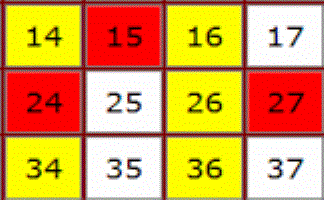276BCE
194BCE
Eratosthenes was a Greek mathematician who lived during the 3rd century BC. He was not only a mathematician but also an astronomer, geographer, and poet. One of his most famous contributions to mathematics is the Sieve of Eratosthenes, a method for finding all prime numbers up to a given limit. This concept involves systematically eliminating multiples of each prime number starting from 2, which ultimately reveals the prime numbers within the specified range.
Aside from his work on prime numbers, Eratosthenes is also known for his accurate calculation of the Earth's circumference.
Eratosthenes measured Earth?s circumference around 240 BC by comparing shadows. In Syene (modern Aswan), a well had no shadow at noon on the summer solstice, indicating the Sun was directly overhead. In Alexandria, 800 km north, a vertical stick cast a shadow, showing the Sun?s rays hit at an angle of about 7.2 degrees.
He reasoned that this angle corresponded to the arc between Alexandria and Syene, which is 1/50th of a circle (7.2 degrees is 1/50th of 360 degrees). Thus, the Earth?s circumference is 50 times the distance between the two cities, approximately 40,000 km.
cmglee, David Monniaux, jimht at shaw dot ca, CC BY-SA 4.0, via Wikimedia Commons
For students studying mathematics, learning about Eratosthenes can provide insights into the world of prime numbers and demonstrate the practical applications of mathematics in fields such as geography and astronomy. His contributions showcase the importance of critical thinking, problem-solving, and mathematical reasoning in exploring the mysteries of the universe.




